
Impacts
Drought has its influence on all aspects of life. Under this tab, we present analysis of the historical and ongoing impacts of drought on Agriculture (Tea, Rice, Coconut, Rubber), Water Resources ( irrigation and water supply), Renewable Energy (hydropower generation), Economy (Economic Growth & GDP) and Public Health.
Contents
Impacts of Drought On Economy
The effects of drought can be found in food shortages due to low cultivation. This can result in low production and it affects the GDP. The Gross Domestic Product is the measure of all the final goods and services produced during a year. Sri Lanka being primarily an economy with high dependence on agriculture there is an inevitable lessening of the above figures as there is a direct connection between the productivity of agriculture and the reverse of a drought condition which is plentiful of rain increasing production. The following figure shows the relationship between the two factors. The hardest hit year in modern times will be 2013 however the dip in the GDP has had a consistent run when compared to the rainfall estimates in the next few years.
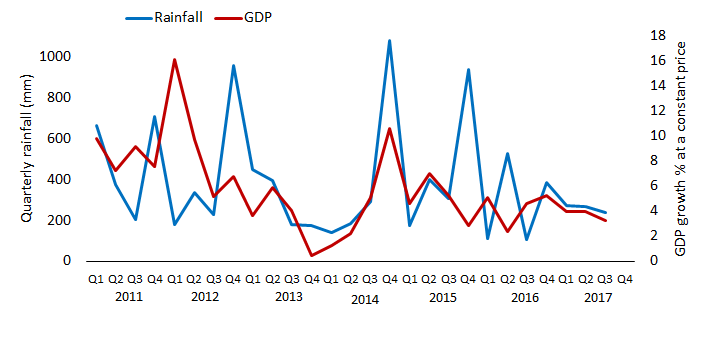
Figure 11: Relation between the Quarterly Rainfall and GDP Growth % at a Constant Price
Impact on Agriculture
The results of a dryer weather are also found in the production of other crops such as paddy, tea, rubber and coconuts.
- Rice Production
- Tea production
- Rubber Production
- Coconut production
Rice as the mainstay of the Sri Lankan diet and on which the livelihoods of many farmers depend has also had a decline in the recent few years owing to the climatic conditions. In the following graph we see how both the total production for both the Yala and Maha seasons as well as the yield per hectare has been decreasing. This leads into higher prices as well as the tendency for imports which also has the final repercussion on the state of the economy. Figure 12 explains the influence of rainfall and thereby drought on paddy production and yield.
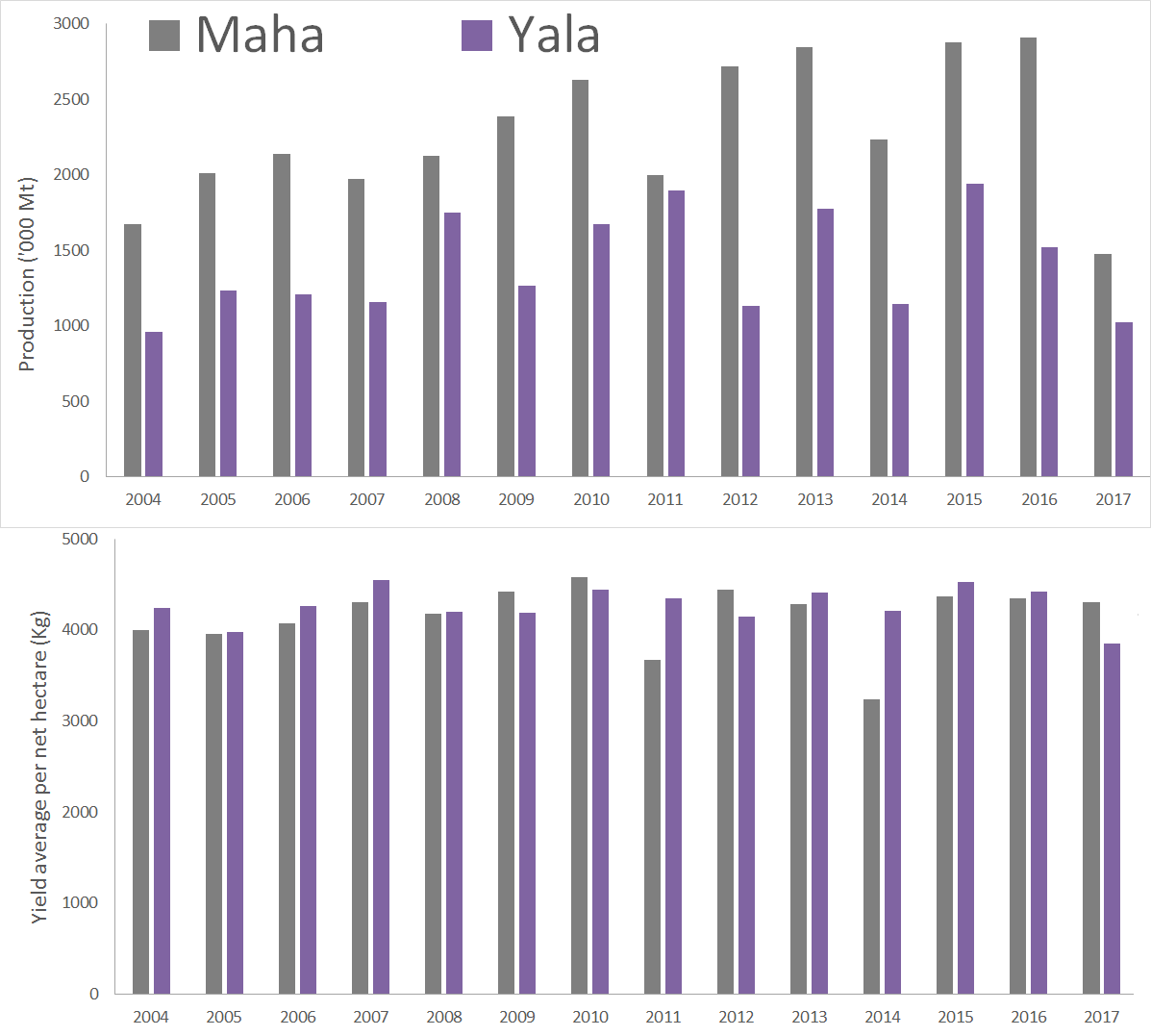
Figure 12: Yala and Maha Paddy Total Production from 2004 to 2017 and Yala and Maha Yield per Hectare
Tea has been for many years major source of foreign exchange whilst also giving employment to over a one million people directly and indirectly. Tea production which is highly sensitive to the climatic condition while also promoting the unique blend of taste and smell has also had a steady fall from 2013 reaching the lowest level it has had for nearly fifteen years with the exception of the year 2009. This is shown in figure 13.
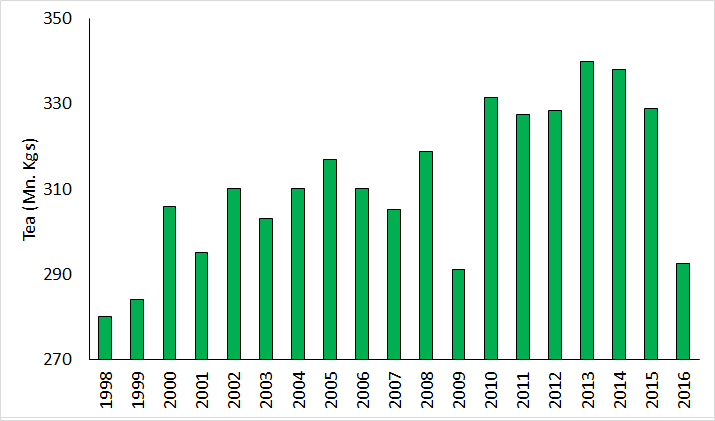
Figure 13 – Total Sri Lankan Tea Production from Year 1998-2016
In figure 14 we see the variations which can be observed in the three main geographical locations where tea is harvested High grown, Mid grown and Low grown areas. Both the High and Low grown areas has been influenced significantly with the climatic condition especially with the dip seen in the graphs towards the months of June to September in which drought condition persisted.
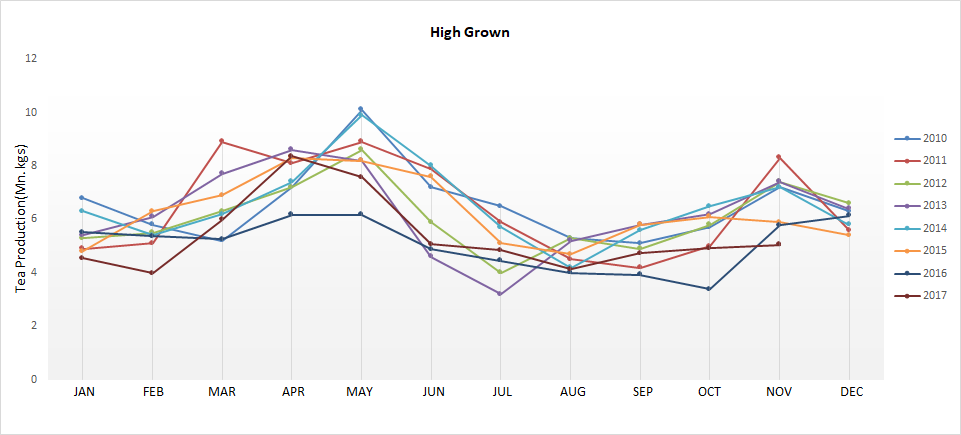
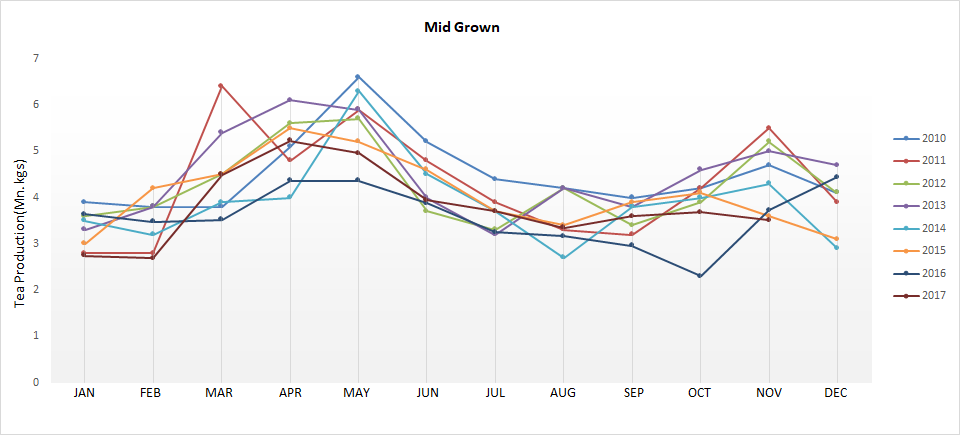
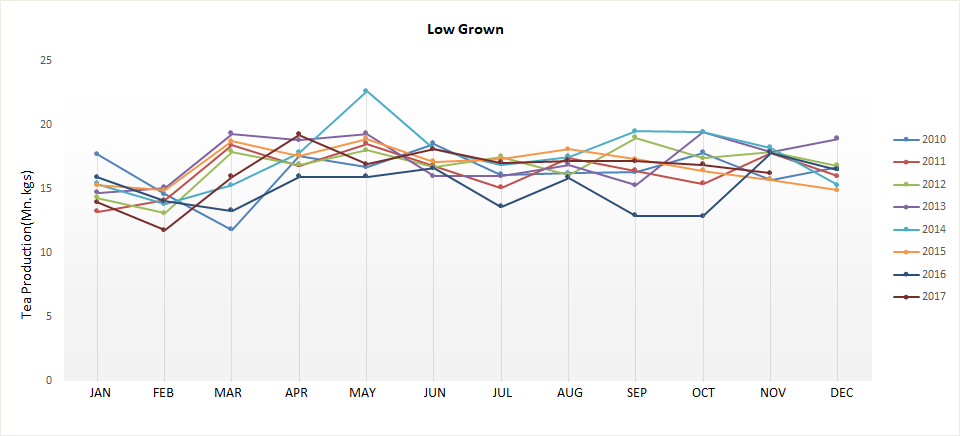
Figure 14: Tea Production the High, Mid and Low Grown Areas.
Rubber has been the third largest export earner in the Sri Lankan economy and extreme weather conditions can hamper and reduce harvesting. The higher temperatures have also affected the latex flow and consequently it has had its effect on yield of rubber. In figure 15 we can see that Rubber production has reached its lowest in eighteen years. The gradual decline can be seen from five year in retrospect and due to the climatic conditions this relation becomes valid.
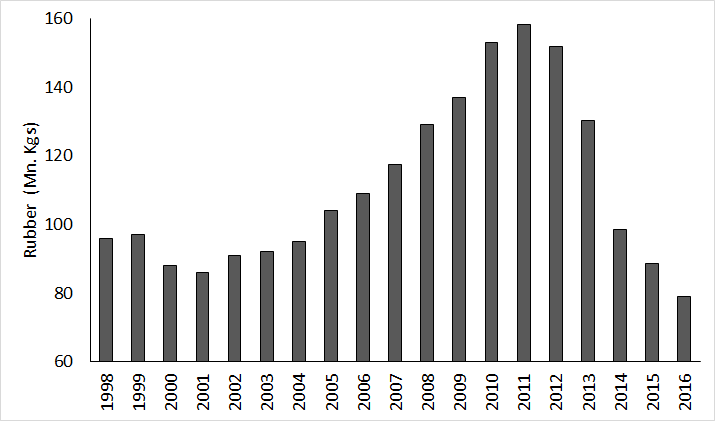
Figure 15: Rubber Production over the Years from 1998 to 2016.
The Coconut triangle comprising the areas Chilaw, Gampaha Puttalam and Kurunegala districts account for the major yield in production. Due to the drought conditions in these areas it has been reported that the yield is to drop by 20% making it difficult even for consumption rather than export and industry use. Figure 16 depicts this reduction in production.
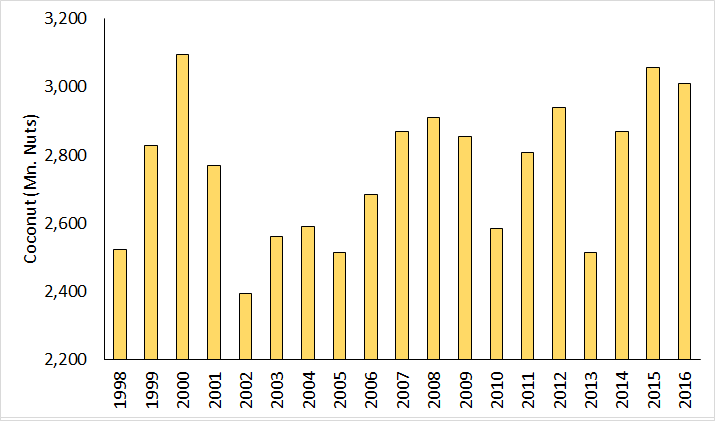
Figure 16: Total Coconut Production from 1998 to 2016
When we look at monthly figures from the coconut production major areas we see that the percentage yields have been negative less for the last two months when compared to 2017 to 2016. This is visible in figure 17.
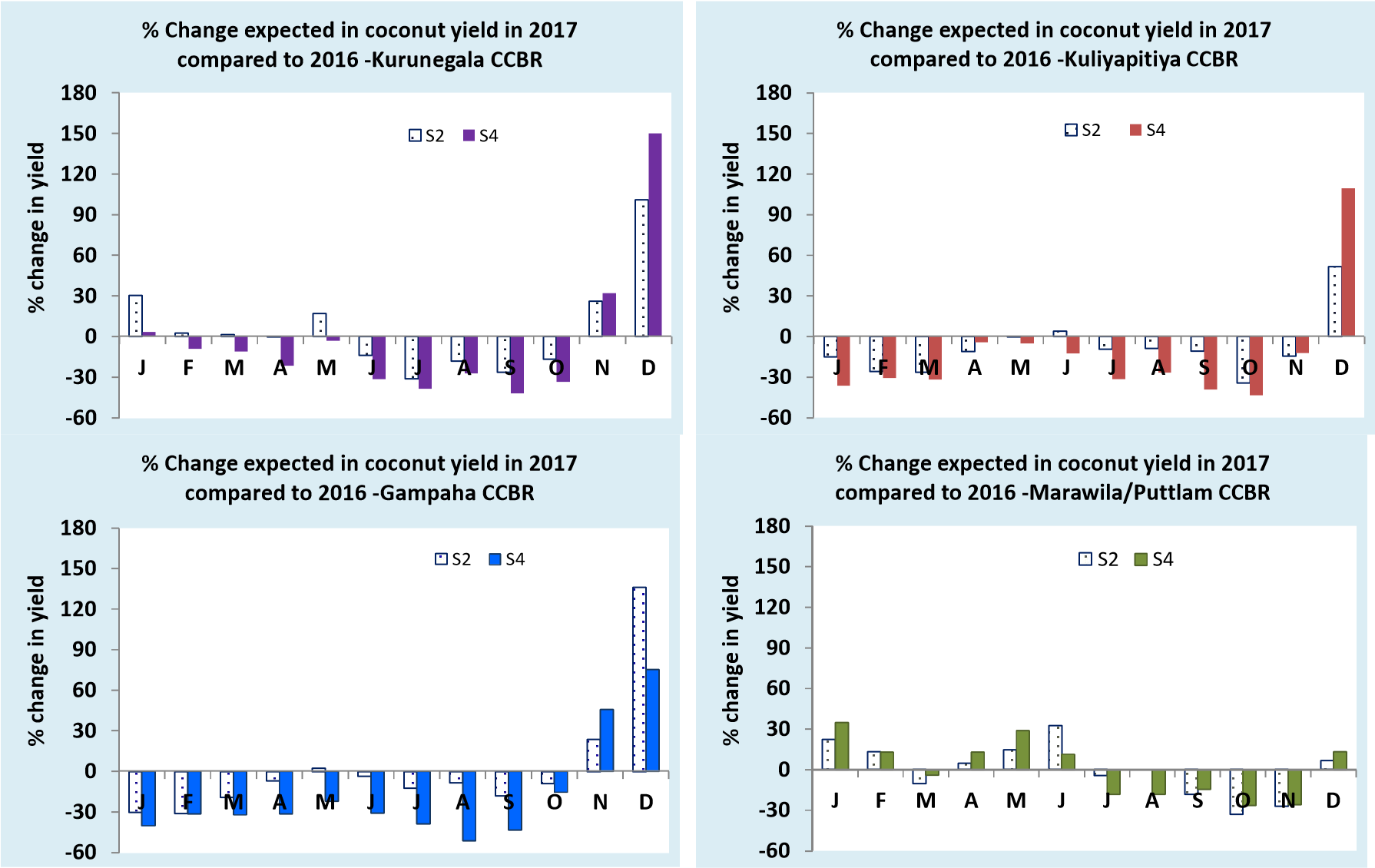
Figure - 17 Monthly Changes Expected In Coconut Yield in 2017 with Respect to 2016 in Major Coconut Growing Areas, Kurunegala and Kuliyapitiya CCB Regions (Kurunegala District), Gampaha and Puttalam Districts (S2 – Suitable Soils, S4 – Marginal Soils)
The above changes can also be seen with the bi-monthly forecasts and reduction when compared to annual national coconut production in 2016 and 2017 as shown in figure 18.
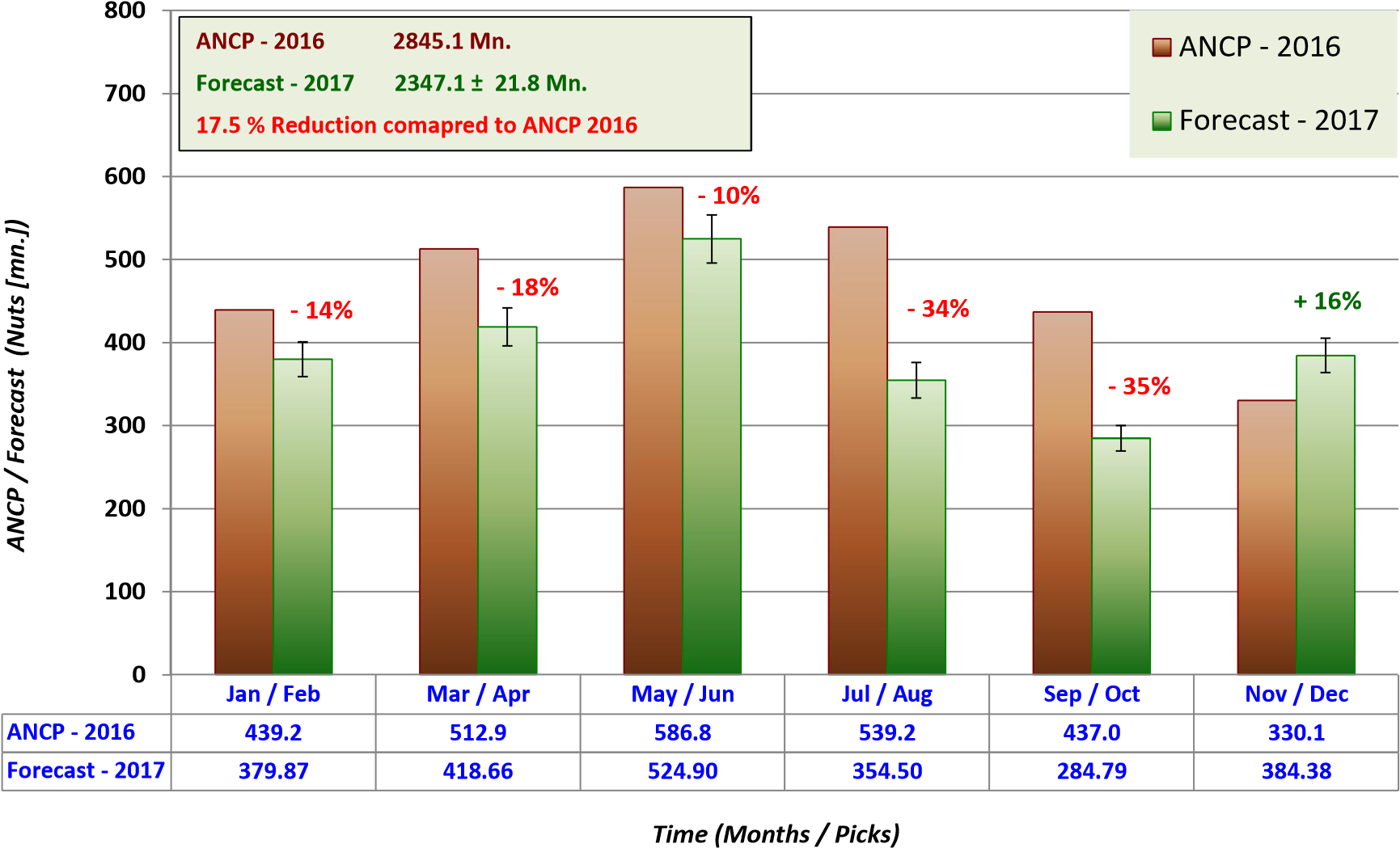
Figure 18 - Comparison of Bi-Monthly Forecast For January – December 2017 with the Estimated National Coconut Production in 2016, ANCP: Annual National Coconut Production
Hydropower Generation
Sri Lanka depends heavily on hydropower for energy purposes. The effects of a drought can be directly visible when we compare the hydropower output over the years. The drought conditions which prevailed in 2016 has had a significant effect on the availability of water for hydropower conversion. The following graph simulates this with the major three reservoirs in figure 19.
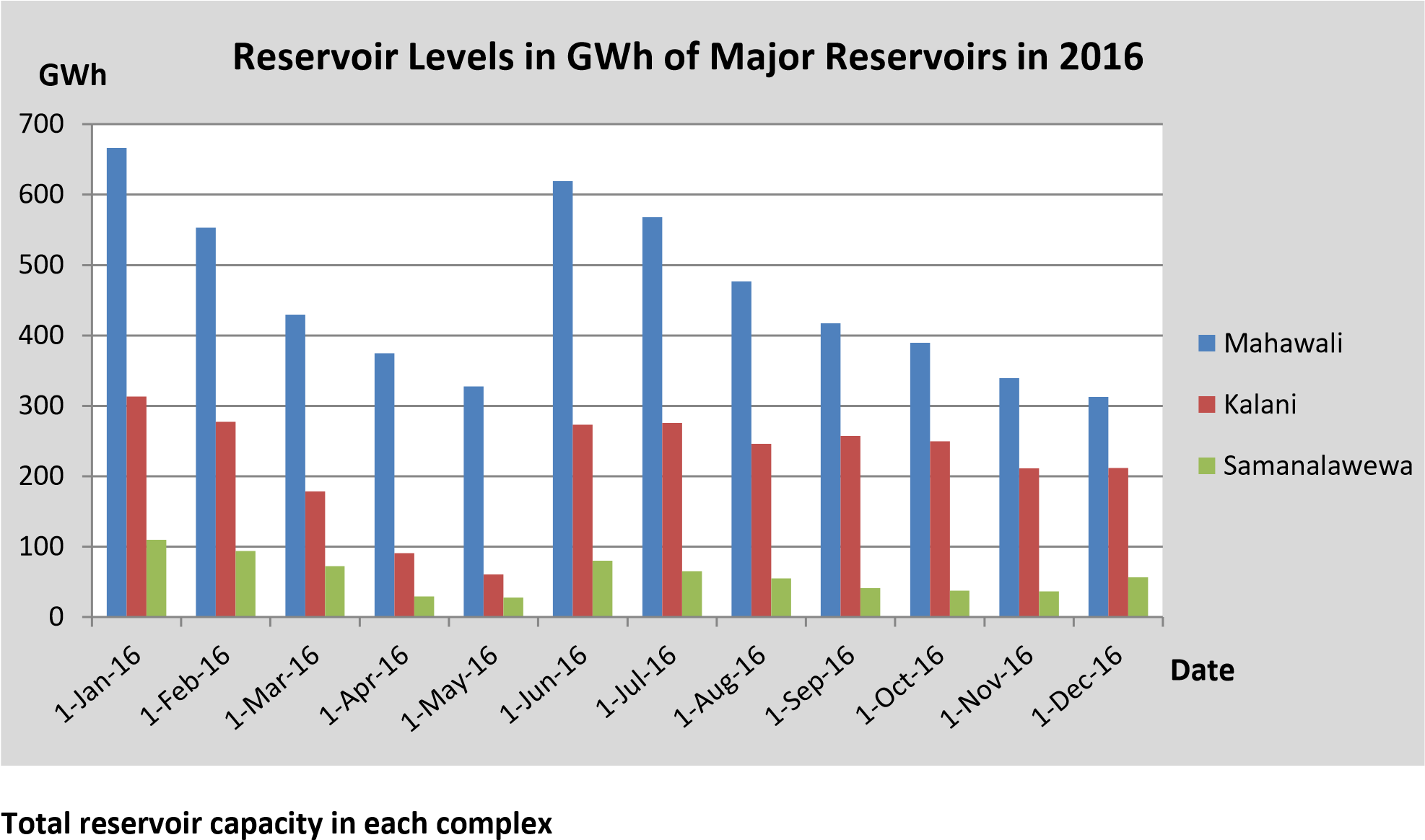
Figure 19 – Reservoir Levels of Major Reservoirs in 2016
This has had an impact on the amount of hydropower units which have been produced. This will raise the question of power cuts as well as the pricing of electricity in the long-term production.
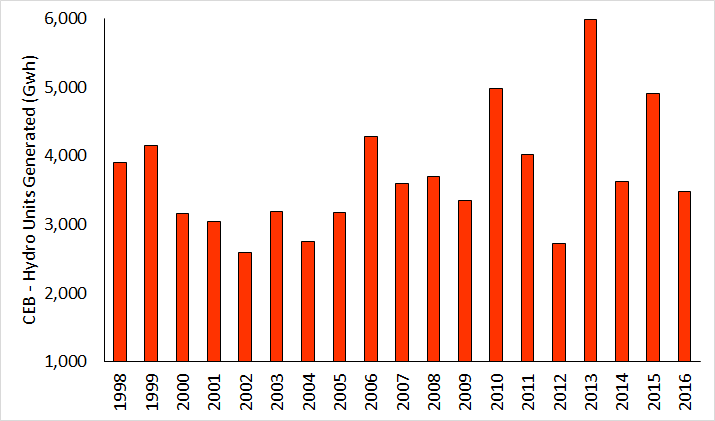
Public Health
2017 experienced the worst dengue outbreaks in the Sri Lanka’s history. This outbreak is illustrated in figure 21. There could be several reasons for the spread of dengue which is a mosquito viral infection. The usual culprit for Dengue has been noted to be idle water on which the mosquito larvae breeding takes place. The mosquitoes also are very sensitive to the temperature and usually in cooler climates the prevalence of Dengue has been limited. There is the possibility that the prevailing drought conditions did trigger a continuous uninterrupted phase of temperature which was susceptible for mosquito breeding.
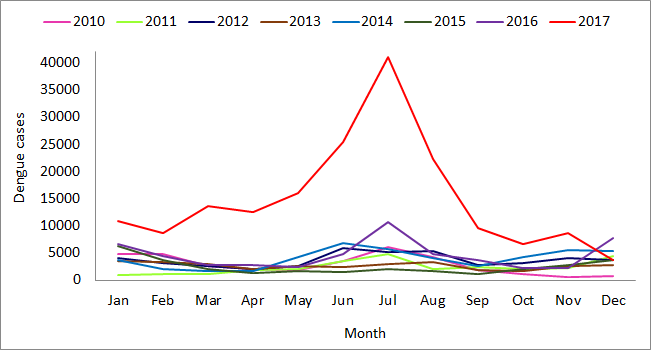
Figure 21- Dengue Cases on a Monthly Basis from 2010 to 2017.
Impacts
- NATURAL DISASTER HOTSPOTS OF SRI LANKA (Vidhura Ralapanawe Et Al) – Major Natural Disaster affecting Sri Lanka are floods, landslides, cyclones, drought all driven by weather and climate. There is a need to identify causes and proactive steps to be taken for mitigation.
- POTENTIAL RAINWATER HARVESTING – A CASE STUDY FROM IDAMELANDA, SL (Ranmalee Bandara Et Al) – Drought is the most frequent disaster in Sri lanka and the expenditure on relief has been dominant except for the recent Tsunami. Drought leads agricultural losses, hardships and rain harvesting techniques are being revived due to this tendency.
- Climate and Water Resource Management (Sumudhu Adikari Et Al) – A collaborative project between the Mahaweli Authority od Sri Lanka and the IRI to investigate the use of climate information and predictions for water resources management.
- Seasonal Streamflow predictions for Water Resource Management in SL (Sumudhu Adikari Et Al) – Rainfall in Sri Lanka shows teleconnections with El Nino phenomenon and Indian Ocean features.
- El Nino. La Nina and Rice Production in SL (Lareef Zubair Et Al) – A relationship between the El Nino state and seasonal rainfall and rice production in Sri Lanka has been discovered. The technological discovery coupled with predicting El Nino state upto a yearn in advance provides policy makers ability to anticipate climatic anomalies.
- The impact of ENSO on rice production area and yield in SL (Sumudu Adhikari Et Al) – The relationship of Sri Lankan regional rice production, harvested area and yield with rainfall and ENSO for the Maha and Yala cultivation seasons based on data from 1950-2009 was analyzed using correlation analysis, regression analysis and composite analysis.
- Climate and Health : Malaria and Dengue in SL( Lareef Zubair Et Al) – Both these diseases put at risk large numbers on the world also making it necessary for Government funding to combat worst case scenarios. An association between, ENSO and Malaria has been reported as well as a link between climate and Dengue in Sri Lanka.
- Challenges in implementing an echo-health approach to mitigate emerging infectious diseases in Kandy, SL ( Kusumawathie P.H.D Et Al) – Conventional approaches to manage re-emerging infectious diseases adopted by health agencies have limitations – some of these may be overcome through the adoption of an eco – health approach.
- Fine Scale evaluation of drought hazard for tropical climates ( Lyon B ET Al)
- Towards developing a weather and climate prediction for Sri Lanka (L. Zubair)

